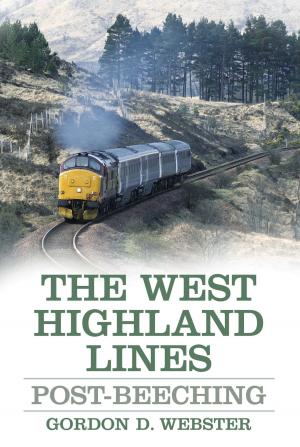| Author: | Paul Kendall | ISBN: | 9780750962520 |
| Publisher: | The History Press | Publication: | September 15, 2010 |
| Imprint: | The History Press | Language: | English |
| Author: | Paul Kendall |
| ISBN: | 9780750962520 |
| Publisher: | The History Press |
| Publication: | September 15, 2010 |
| Imprint: | The History Press |
| Language: | English |
In the spring of 1917 the Arras offensive was begun to break the stalemate of the Western Front by piercing the formidable German defenses of the Hindenburg Line. The village of Bullecourt lay at the southern end of the battle front, and the fighting there over a period of six weeks from 11 April until late May 1917, epitomized the awful trench warfare of World War I. In Bullecourt 1917, Paul Kendall tells the stories of the fierce battles fought by three British and three Australian divisions in an attempt to aid Allenby's Third Army break out from Arras. Approximately 10,000 Australian and 7,000 British soldiers died, many of whom were listed as missing and have no known grave. The battle caused much consternation due to the failure of British tanks in supporting Australian infantry on April 11th, but despite the lack of tank and artillery support the Australian infantry valiantly fought their way into the German trenches. It took a further six weeks for British and Australian infantry to capture the village. This book tells the story of this bitter battle and pays tribute to the men who took part. Crucially, Paul Kendall has contacted as many of the surviving relatives of the combatants as he could, to gain new insight into those terrible events on the Hindenburg Line.
In the spring of 1917 the Arras offensive was begun to break the stalemate of the Western Front by piercing the formidable German defenses of the Hindenburg Line. The village of Bullecourt lay at the southern end of the battle front, and the fighting there over a period of six weeks from 11 April until late May 1917, epitomized the awful trench warfare of World War I. In Bullecourt 1917, Paul Kendall tells the stories of the fierce battles fought by three British and three Australian divisions in an attempt to aid Allenby's Third Army break out from Arras. Approximately 10,000 Australian and 7,000 British soldiers died, many of whom were listed as missing and have no known grave. The battle caused much consternation due to the failure of British tanks in supporting Australian infantry on April 11th, but despite the lack of tank and artillery support the Australian infantry valiantly fought their way into the German trenches. It took a further six weeks for British and Australian infantry to capture the village. This book tells the story of this bitter battle and pays tribute to the men who took part. Crucially, Paul Kendall has contacted as many of the surviving relatives of the combatants as he could, to gain new insight into those terrible events on the Hindenburg Line.















